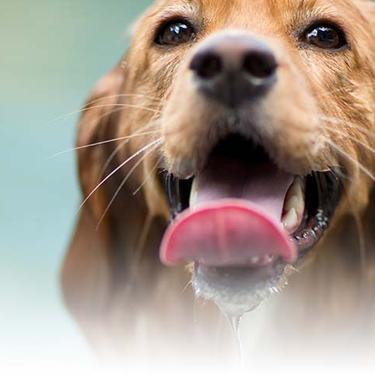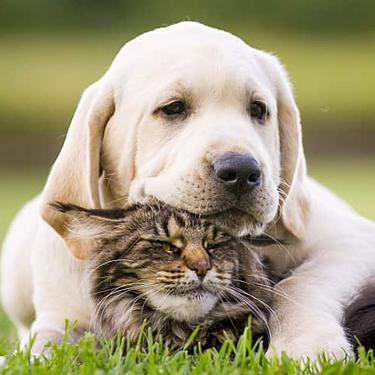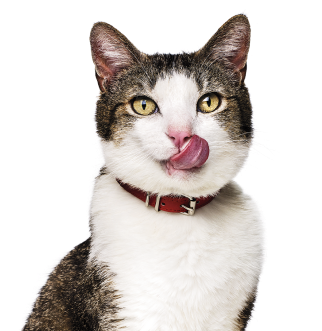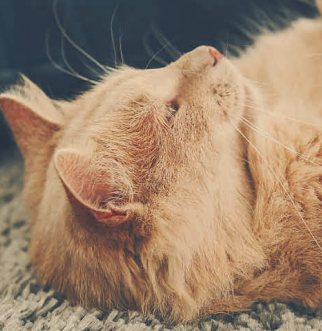
-
Find the right food for your pet
Take this quiz to see which food may be the best for your furry friend.
Find the right food for your pet
Take this quiz to see which food may be the best for your furry friend.
Featured products
 Adult 7+ Perfect Digestion Chicken, Whole Oats & Brown Rice Recipe Dog Food
Adult 7+ Perfect Digestion Chicken, Whole Oats & Brown Rice Recipe Dog FoodScience Diet's breakthrough nutrition supports ultimate digestive well-being & healthy microbiome for dogs age 7+
Shop Now Adult Perfect Weight & Joint Support Chicken Recipe Dry Dog Food
Adult Perfect Weight & Joint Support Chicken Recipe Dry Dog FoodThis weight management and mobility support dog food was created with Hill’s unique understanding of the biology of overweight dogs.
Shop Now Adult 7+ No Corn, Wheat, Soy Chicken & Brown Rice Dog Food
Adult 7+ No Corn, Wheat, Soy Chicken & Brown Rice Dog FoodSupports energy level and beautiful coat in mature dogs
Shop NowFeatured products
 Adult Perfect Digestion Chicken, Barley & Whole Oats Recipe Cat Food
Adult Perfect Digestion Chicken, Barley & Whole Oats Recipe Cat FoodScience Diet's breakthrough nutrition supports ultimate digestive well-being & healthy microbiome
Shop Now Perfect Weight Salmon & Vegetable Canned Cat Food
Perfect Weight Salmon & Vegetable Canned Cat FoodOver 70% of cats lost weight within 10 weeks when fed this nutrition
Shop Now Adult Savory Chicken Entrée Cat Food
Adult Savory Chicken Entrée Cat FoodPrecisely balanced nutrition with the delicious taste of savory minced chicken to help fuel the energy needs of cats during the prime of their life
Shop Now -
Dog
- Dog Tips & Articles
-
Health Category
- Weight
- Food & Environmental Sensitivities
- Urinary
- Digestive
- Joint
- Kidney
-
Life Stage
- Puppy Nutrition
- Adult Nutrition
- Senior Nutrition
Cat
- Cat Tips & Articles
-
Health Category
- Weight
- Skin & Food Sensitivities
- Urinary
- Digestive
- Kidney
-
Life Stage
- Kitten Nutrition
- Adult Nutrition
Featured articles
 Water
WaterDiscover why water is the most important nutrient for your dog or cat to live a healthy life. Find out how much water your pet should consume each day.
Read More Pet Food Storage Tips
Pet Food Storage TipsDiscover how and where to store your dry, as well as canned, dog and cat food. Learn how to find the "best before" dates on all Hill's pet food packaging.
Read More The Incredible Science Behind Your Pet's Microbiome
The Incredible Science Behind Your Pet's MicrobiomeLearn what a pet's microbiome is, how it contributes to your pet's gut & overall health, and why nutrition is important in maintaining healthy microbiomes.
Read More -
Find the right food for your pet
Find the right food for your pet


Keeping the house clean can be a challenge for anyone who owns pets. There’s nothing worse than getting home after a long day at work to a terrible odor or mess on the floor. Spraying is one of the most common behavioral problems in cats, along with scratching. But while your first instinct may be to discipline your cat for this undesirable behavior, keep in mind that this is a natural behavior for your cat, and it should be redirected instead of punished.
Why Does My Cat Spray?
In the wild, cats leave scent signals to communicate with other cats through rubbing, scratching, urinating, and spraying. Scent signals let cats know when another cat has claimed an area as their own, when they were there and might return, and if they are looking for a mate. While most spay and neutered cats who live indoors do not feel the need to spray, those who do are typically under stress and want to surround themselves with their own scent for protection. Even though you’ve created a safe, nurturing environment for your cat, she may still feel distressed and want to mark her territory.


Tasty Tips
Since our first pet food in the late 1930s, we’ve set out to create differences you can see, feel and trust.

Spraying is one of the most common behavioral problems in cats, along with scratching.
What to Do if Your Cat is Spraying
First, determine whether your cat is spraying or urinating. Cats urinate by squatting onto a horizontal surface; spraying occurs standing up. The cat makes a treading motion with her back feet and quivers her tail, leaving her scent mark on a vertical surface.
If your cat has begun urinating outside of their litter box, be sure that the box is regularly cleaned. If the behavior persists, take them to the veterinarian to check for lower urinary tract disease and cystitis. A urinary tract infection can cause your cat to urinate while standing, confusing the act with spraying. Cystitis can also cause symptoms of lower urinary tract disease, including frequent attempts to urinate, straining to urinate, crying while urinating, and blood in urine. Cats who suffer from recurrent cystitis often benefit from increased fluid intake, which may require switching your cat to wet food might be a helpful part of an overall treatment plan. Consult your veterinarian for help managing health concerns and nutrition.
Consider recent changes to your household that may be affecting your cat’s behavior—especially if they spend most of their time indoors. Unsettling changes can include the arrival of a new baby or pet, a house move, schedule changes, or even rearranging furniture. To deter threats from other household or neighborhood cats, block access to cat flaps or doors. Once your cat feels that their territory is not threatened, they will no longer feel the need to mark it.
Moving furniture or redecorating can be upsetting to a cat, because it removes their scent from places they have designated around your house. By spreading their scent to familiar places, they may feel less inclined to spray. Rub a soft cotton cloth gently around your cat’s face; this is where their individual scent and pheromones are produced. Apply the cloth several times per day to areas where your cat is spraying. Synthetic pheromones are also available through your veterinarian.
Cats also feel most comfortable when they are secure. You can make your cat feel a sense of security by limiting their patrol area to one or two rooms.
Once your cat has urinated or sprayed in your house, she may return to that spot again if the area isn’t thoroughly cleaned.
- Keep your cat away from the area as long as possible. For example, place a piece of furniture on the spot.
- Wash the area with enzyme-containing laundry detergent and rinse thoroughly. Then, mix a solution of 50 percent white vinegar and water, and spray.
- Spray and scrub the area with rubbing alcohol and dry. Test delicate surfaces on a small area before application.
- Talk to your veterinarian about a stain and odor remover to get rid of residual odors.
- Do not use an ammonia-based cleaner. Because urine contains ammonia, this might attract your cat to return to the spot.
Finally, with any behavioral issues your cat might display it is important to never yell at or punish them. This can only cause a situation such as spraying to get worse as they may become more stressed. Cats do not understand punishment, to correct a behavior problem is best to train them and continue to show them love and affection. Slowly over time you can help redirect poor behaviors and have the cute and cuddly cat you’ve always wanted.

See what Vets have to say
Read reviews from the experts and see why Hill's is the #1 Veterinarian Recommended brand.
See what Vets have to say
Read reviews from the experts and see why Hill's is the #1 Veterinarian Recommended brand.




